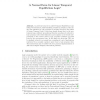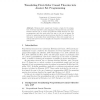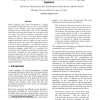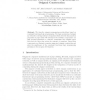1776 search results - page 43 / 356 » Using a Logic Programming Language with Persistence and Cont... |
SIGCSE
2002
ACM
13 years 8 months ago
2002
ACM
In our approach to the Programming Languages course, formal models are integrated as a thread that pervades the course, rather than as a one of many topics that is introduced and ...
JELIA
2010
Springer
13 years 7 months ago
2010
Springer
In previous work, the so-called Temporal Equilibrium Logic (TEL) was introduced. This formalism provides an extension of the Answer Set semantics for logic programs to arbirary the...
JELIA
2010
Springer
13 years 7 months ago
2010
Springer
Abstract. Nonmonotonic causal logic became a basis for the semantics of several expressive action languages. Norman McCain and Paolo Ferraris showed how to embed propositional caus...
SIGMOD
1997
ACM
14 years 1 months ago
1997
ACM
Visual Language (VL) system development is getting increasingly sophisticated in part due to the arduous nature of user interface (UI) code development. This typically involves id...
APLAS
2003
ACM
14 years 2 months ago
2003
ACM
We describe origami programming methodology based on constraint functional logic programming. The basic operations of origami are reduced to solving systems of equations which desc...




